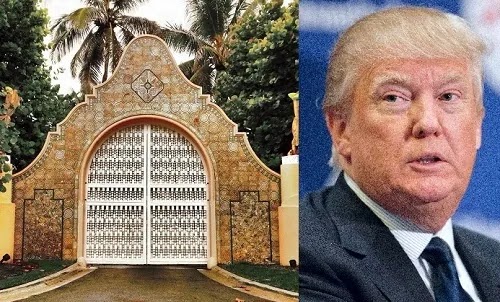Documents marked confidential are jumbled in Mar-a-Lago's search inventory with clothing, gifts, and press clippings

A thorough inventory from the Mar-a-Lago search, which the Justice Department had previously filed in court under seal, was made public by US District Judge Aileen Cannon on Friday.
According to the search inventory that was made public, the boxes in which they were kept contained both personal belongings and other stuff in addition to classified documents.
More than 11,000 non-classified government documents were also found by federal investigators in former President Donald Trump's Florida residence and resort.
According to the inventory from last month's search submitted in federal court in Florida, one of the boxes holding documents marked with the confidential, secret, and top secret classification identifications also contained "99 magazines/newspapers/press stories."
A number of additional boxes listed in the inventory held classified documents along with press clippings, clothing items, and presents.
A breakdown of the several types of markings on the classified materials removed from Mar-a-Lago was also disclosed in the court filing, including 18 documents tagged top secret, 54 documents marked secret, and 31 documents marked confidential.
Several empty folders
The inventory lists dozens of blank folders with "classified" banners among the materials the FBI confiscated.
According to the DOJ, there were 42 empty files intended to be returned to the staff secretary or a military assistant, as well as more than 48 empty folders stamped with a "classified" flag.
According to numerous sources acquainted with White House protocols for handling classified information, such kinds of folders are frequently reused and purposely meant to hide their contents. Two of the sources said that these folders occasionally carry tracking numbers, albeit such occurrences are uncommon.
The empty folders were an alarming sign that unknown classified information might go unaccounted for by federal investigators, who might find it challenging to piece together what information those folders previously contained, much less what happened to it. This was true for some current and former intelligence officials.
However, one person acquainted with these kinds of papers noted that simply discovering an empty folder is not a guarantee that any of the material it once held has been handled improperly because those folders are frequently reused.
This person said, "Empty folders create issues, but were they empty and lacking in the description?" "It's common practice to cover a folder with a cover sheet and carry it around with various documents inside. comparable to discovering cover sheets, which are typically lying around in classified situations and are not a problem in and of themselves.
In other words, it's uncertain how simple it would be to ascertain their previous contents without knowing more about how these files were identified, such as whether they contained any sort of tracking or control number.
However, according to the same sources, detectives might be able to put together certain environmental cues. The transfer of sensitive material to the president is intended to be documented. The National Archives alerted the Justice Department this spring that the papers it retrieved from Mar-a-Lago in January contained classified data that was "unfolded, jumbled with other materials, and otherwise improperly designated," according to one of the individuals.
The inventory also lists numerous files with the label "Return to Staff Secretary/Military Aide" on them. Normally, a military aide or other staff member assigned to the White House is in charge of protecting the materials when the president needs to access them for a briefing. The president will study the information, use it however he sees fit, and then give it back to the aide for proper treatment.
A report from the DOJ notes an "ongoing inquiry"
The department issued a status report under seal on the investigation team's examination of the available evidence, which the judge also made public.
Cannon declared her intention to release the records during a hearing on Thursday. She did this after allowing both Trump's legal team and the prosecutors to voice any concerns about the release of the records. No, they didn't.
The government's investigation would be aided by "all evidence pertaining to the seized items, including, but not limited to, the nature and manner in which they were stored, as well as any evidence with respect to particular documents or items of interest," according to the investigative team status report that was unsealed.
The investigative team had examined the materials that had been seized "in furtherance of its ongoing investigation, evaluating the relevance and character of each item seized and making preliminary determinations about investigative avenues suggested or warranted by the character and nature of the seized items," according to the status report.
According to the Justice Department, "As the investigation moves forward, including via more witness interviews and grand jury deliberations, it will continue to scrutinize and assess the items that were seized. The government's inquiry will be strengthened by the use of the materials it has obtained."
Post a Comment